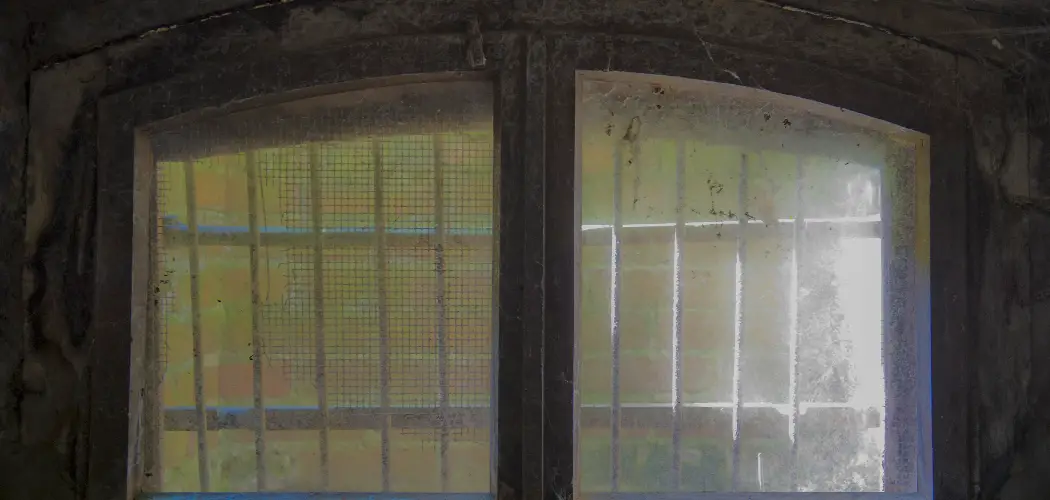It can be daunting to think about how to seal a basement window. After all, it’s an important task that requires you to have the right skills and knowledge in order to get it done properly. You might be concerned that you don’t know enough or don’t have the proper tools for the job but rest assured that having some handy DIY skills is all you need!

In this blog post, we’ll walk through exactly what steps are necessary to properly seal your basement windows so that they remain protected from water damage and air infiltration. We’ll also provide some helpful tips along the way so that you can feel confident tackling this project with confidence.
Importance of Properly Sealed Basement Windows
Basement windows can be a great source of light and ventilation, but if they are not properly sealed, water or air leaks can cause damage to the inside of your home. Properly sealing basement windows is an important step in protecting your home from water or moisture damage due to poor window insulation.
Not only does this prevent mold growth and rot, but it also helps to reduce energy costs. In addition, sealed windows add another level of security by preventing potential intruders from entering your home. Taking the time to properly seal and insulate your basement windows can save you a great deal of money in the long run.
When sealing your basement windows, be sure to use a high-quality weatherproof sealant that is specifically designed for vinyl or aluminum frames. Before application, it’s important to clean the surface of the window and frame with a mixture of warm water and detergent. Then, apply a bead of sealant around the outside edge of the window, taking care to firmly press it into any gaps or spaces. Allow the sealant to dry for 24 hours before opening or closing the window.
10 Methods How to Seal a Basement Window
1. Assess the Window’s Condition:
Before starting the sealing process, thoroughly inspect the basement window for any signs of damage, cracks, or gaps. Identify areas where moisture or drafts may be entering and prioritize addressing those issues.
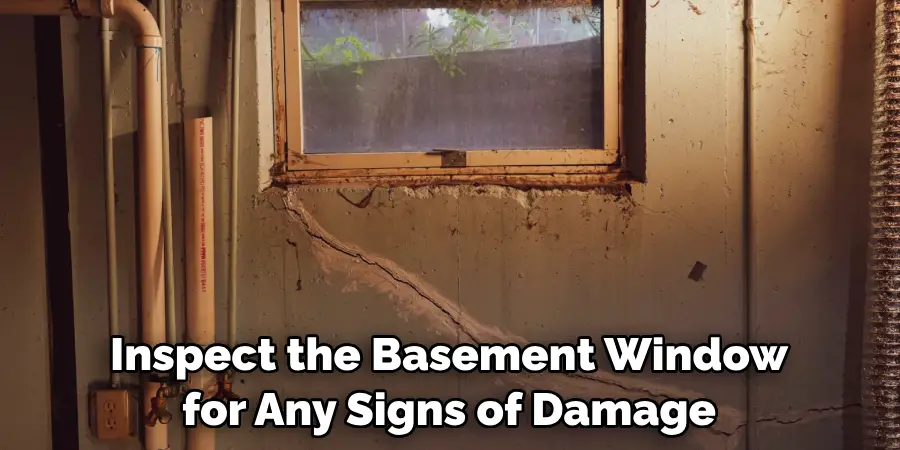
Though repairing a window is often difficult and time-consuming, it may be necessary to ensure the window is properly sealed. Although it is possible to seal a window without repairing any damage, if the window has been significantly damaged or compromised, then repairs should be made before sealing.
2. Clean the Window:
Clean the window frame and glass to ensure a proper seal. Use a mild detergent and water solution to remove dirt, grime, and debris from the window surfaces. Dry the window thoroughly before proceeding. To avoid any future leaks, be sure to caulk any gaps between the window and the wall.
However, it may seem like a tedious task, but taking the time to properly clean and seal the window will pay off in the long run. Make sure to clean the window annually for the best results. When finished, the window should be free of dirt and debris.
3. Apply Weatherstripping:
Weatherstripping is an effective method to seal gaps around the window frame. Measure the dimensions of the gaps and select the appropriate weatherstripping material. Apply the weatherstripping along the sides and top of the window frame to create a tight seal when the window is closed.
Once applied, use a utility knife to trim off any excess material. To test the seal, close the window and feel for any air movement. If you still feel a draft, add caulk or additional weatherstripping as needed. Your window should now be sealed and protected from the elements.
4. Install Window Insulation Film:
Window insulation film is a cost-effective solution to improve insulation and prevent drafts. Cut the insulation film to fit the dimensions of the window and apply it using double-sided tape. Use a hairdryer to shrink the film, creating a tight and transparent barrier that helps reduce heat loss and drafts. When properly installed, window insulation film can make a significant difference in the energy efficiency of your basement.
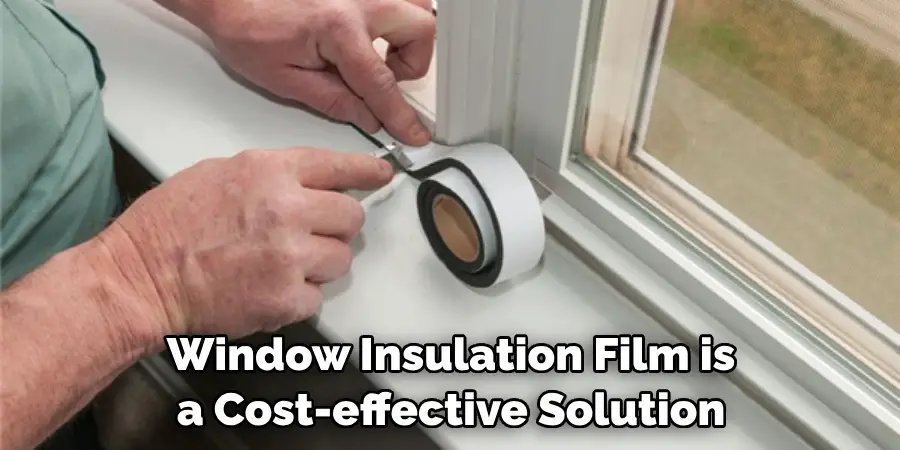
5. Use Caulk to Seal Cracks and Gaps:
Caulking is an effective method to seal cracks and gaps around the window frame. Select a high-quality silicone or acrylic-based caulk suitable for exterior use. Fill any visible cracks or gaps with caulk, ensuring a continuous seal along the entire perimeter of the window. For best results, use a caulk gun and steady hand to apply the caulk. Smooth out any excess with your finger or a wet rag.
6. Install Exterior Window Well Covers:
Window well covers are an excellent addition to prevent water from entering the basement through window wells. Measure the dimensions of the window well and choose a cover that fits securely. Install the cover according to the manufacturer’s instructions, ensuring it provides a tight seal against the window well. If your window well cover is missing or damaged, replace it immediately.
7. Apply Waterproofing Membrane:
For added protection against moisture, consider applying a waterproofing membrane around the window frame. Clean the surface thoroughly and apply the membrane according to the manufacturer’s instructions. This barrier will create an additional layer of protection against water intrusion.
Make sure to apply the membrane in a way that does not interfere with the window’s operation. However, keep in mind that a waterproofing membrane will not provide full protection from water infiltration and should be used in combination with other sealing techniques. To get the most protection from a waterproofing membrane, it is best to apply it in conjunction with other sealing methods.
8. Replace Damaged or Rotted Wood:
If the window frame or surrounding wood is damaged or rotted, it is essential to replace it before sealing the window. Remove the affected wood, replace it with new, treated wood, and ensure a secure fit.
This step will eliminate potential entry points for moisture and enhance the overall structural integrity of the window. Though this step requires a bit of extra effort, it is worth the time and resources to ensure that the window is sealed securely.
9. Install Window Well Drains:
Window well drains are effective in redirecting water away from the window and preventing basement flooding. If your basement window is prone to excess water accumulation, consider installing window well drains to provide an additional layer of protection. Consult with a professional or follow manufacturer instructions for proper installation.
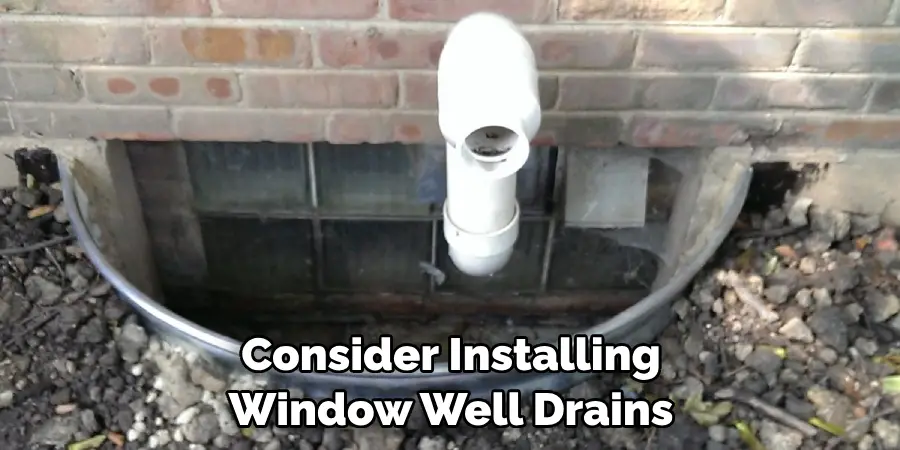
While these drains are relatively easy to install, they require the window well to be dug out and the gravel bed removed so that the drain pipes can be installed. Additionally, the drain pipes should be connected to a sump pump or other drainage system to ensure that the water is properly diverted away from your basement window.
10. Maintain Regular Inspections and Maintenance:
Once the basement window is sealed, it is crucial to conduct regular inspections and maintenance. Check for any signs of wear, damage, or compromised seals. Clean the window regularly and address any issues promptly to ensure long-lasting effectiveness.
It is also important to keep the area around the window clear of debris that could impede airflow. Doing these simple tasks can help protect your home from moisture damage or other potential issues.
Some Common Mistakes to Avoid When Sealing a Basement Window
1. Using the Wrong Type of Sealant:
Many people opt to use silicone caulk when sealing their basement windows. However, using the wrong type of sealant can cause cracking, peeling, and other damage to your window. Make sure you use a high-quality latex caulk designed specifically for windows if you want to get the best results.
2. Not Applying Enough Sealant:
When sealing your basement window, make sure you apply enough sealant to form a barrier that is at least an eighth inch thick. If you don’t apply enough, your window won’t be properly sealed, which can lead to water damage.
3. Trying to Seal without Cleaning:
Before applying sealant, make sure you clean the area around the window and remove any dirt or debris. If you try to seal with dirt present, it could cause the sealant to not bond correctly and create gaps where air and moisture can enter your home.
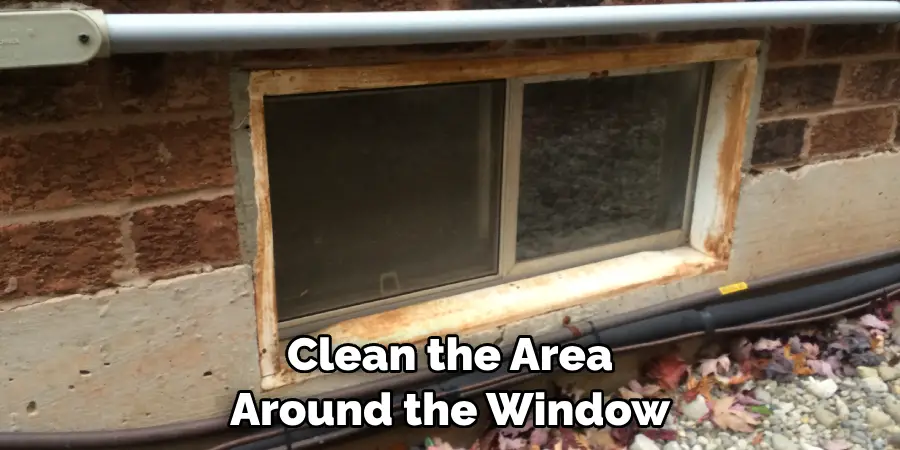
4. Not Waiting for Adequate Drying Time:
Once the sealant has been applied, give it time to dry completely before opening or closing the window again. Even when using quick-drying sealants, it is important to wait the appropriate amount of time before using your window.
Conclusion
So there you have it – now you know how to seal a basement window. Whether you decide to take on the task yourself or hire a professional, be sure to follow these steps for a successful installation. With the right knowledge and tools, sealing your basement windows will help make your home more energy efficient, comfortable, and secure.
By following this guide, you can save time and money while alleviating stress and worry regarding potential water damage. Get started now on sealing your basement windows and reap the rewards of a safe and secure living environment.
About
Angela is the chief editor of Indoorense. She began her career as an interior designer before applying her strategic and creative passion to lifestyle and home.
She has close to 15 years of experience in creative writing and online content strategy for housekeeping and cleaning,home decorations as well as other efforts.
She loves her job and has the privilege of working with an extraordinary team. She lives with her husband, two sons, and daughter in Petersburg. When she’s not busy working she spent time with her family.

